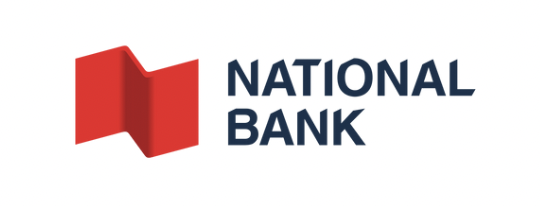Jan 5, 2023
Canada
Guide to CanadaNavigating the Canadian Banking System: A Guide for Immigrants
Learn the essentials of the Canadian banking system, including types of institutions, account opening procedures, and key financial tips.

If you're new to Canada, one thing you'll want to get a handle on is the banking system. As an immigrant to Canada, it is important to understand how the banking system works. In this guide, we will cover some of the most important things you need to do, in order to manage your finances effectively.
1. Opening a bank account
Opening a bank account in Canada is the first step to banking in Canada, and it can be difficult for a foreigner sometimes. Normally, you will need to open a bank account in person, whether you want to open a personal or business account.
SuperVisas partnered with the National Bank of Canada to help you to open your bank account remotely. If you have already registered a company in Canada and want to open a business bank account or have questions about opening a bank account overseas, you can contact the SuperVisas support team at support@supervisas.com for further assistance.
Once you've opened a bank account, you'll be able to access your money through various channels, such as online banking, mobile banking, or by visiting a physical branch. You'll also be able to use debit and credit cards to make purchases and withdraw cash from ATMs.
2. Using bank services
Understanding Canadian banking and its features is essential to any newcomer living and working in Canada. As a new immigrant, the Canadian banking system can be quite daunting. Once you have a bank account, you can use it to deposit and withdraw money, write checks, pay online bills and transfer funds with online banking services.
Having a bank account and using it in order to deposit and withdraw money allows you to manage your finances responsibly. It also lets you access credit, set up savings accounts or investment portfolios.
3. Credit and loans
Credit and loans can be helpful if you ever find yourself in a situation where you need to borrow money, such as when attempting to purchase a large ticket item like a car or home. Banks and other financial institutions offer various types of credit and loans, and it is important to understand the terms and conditions before borrowing.
Many immigrants would want to get a credit card soon after they land in Canada. Having a credit card in Canada allows you to create a credit history that different organizations may consult to learn more about your payment practices, such as paying your monthly bill. And it can improve your credit score, which lenders use to determine, among other things, how risky you are when you apply for a loan. If you have a strong credit score, it might be simpler for you to secure loans, like a mortgage. You may even be able to receive better interest rates with good credit.
Other benefits of having a credit card includes:
- Pay for different services fast and securely when making purchases both in-person and online.
- Take advantage of features like extended warranties, purchasing insurance (which includes theft coverage), and rewards programs that give cashback or allow you to accumulate points that may be used for gift cards or trip savings.
- Finance big purchases that might have been difficult when you're first starting out in Canada.
4. Protecting your finances
Protecting your financial information and assets is important. This includes being aware of scams and fraud and securing your bank account and credit cards.
Tricks and schemes to uncover information or swindle your hard-earned money are out there, so it's important to equip yourself with the necessary knowledge to safeguard yourself from financial attacks. Know the scams that are circulating; they continuously evolve as hackers discover new tricks to pluck away at your bank account or credit cards.
It is a good idea to check financial statements every month for accuracy, set up alerts with your bank or credit card company, and never share account information with anyone.
5. Difference between a debit card and a credit card
A debit card is linked to your bank account and allows you to make purchases or withdraw cash using the funds available in your account. When you use a debit card, money is immediately sent from your account to the merchant or financial institution. Debit cards do not have credit limits, and you are only allowed to withdraw the amount that is in your account at the time.
A credit card is a loan you can use to make purchases or withdraw cash up to a certain limit, known as your credit limit. The credit limit on your credit card is a loan that you can use to make purchases or cash withdrawals up to that amount. By using a credit card, you are borrowing money from the bank/company that issued it, and you must repay it later, typically with interest. Additionally, certain credit cards may provide rewards or other advantages, such as cashback or points that can be used to purchase goods or book trips.
6. Difference between a checking account and a saving account
There are two main types of accounts. You can access them using your debit card. They are chequing accounts and savings accounts. You can carry out several transactions using a chequing account, including deposits and withdrawals. You can put the money you don't need for daily spending into a savings account. For instance, you may utilize the money to start an emergency fund.
7. Setting up a TFSA
A registered tax-advantaged savings account called a tax-free savings account (TFSA) enables you to make money tax-free. A TFSA can be compared to a container where you can keep eligible investments that could produce tax-free interest, capital gains, and dividends. The benefits of using a TFSA to save money are flexibility, tax-free growth and retirement planning.
8. Setting up an RRSP account
A Registered Retirement Savings Plan (RRSP) is a financial tool, and you can make contributions for retirement that have been registered with the Canadian federal government. When you contribute an RRSP, your money is "tax-advantaged," which means you are not required to pay taxes on it in the year you contribute. As long as the funds are kept in the RRSP until they are withdrawn, any investment income from investments retained there can grow tax-deferred.
As a newcomer to Canada, it's natural to have questions about the banking system and how to navigate it. By understanding the Canadian banking system, you can make informed decisions about your financial management in Canada. It's always a good idea to consult a financial expert or look for more resources and information if you have specific concerns or questions.
Want to immigrate to Canada? Check your eligibility for Canadian visas with instant results here.
Trusted by

TeamSuperVisas Scribe





